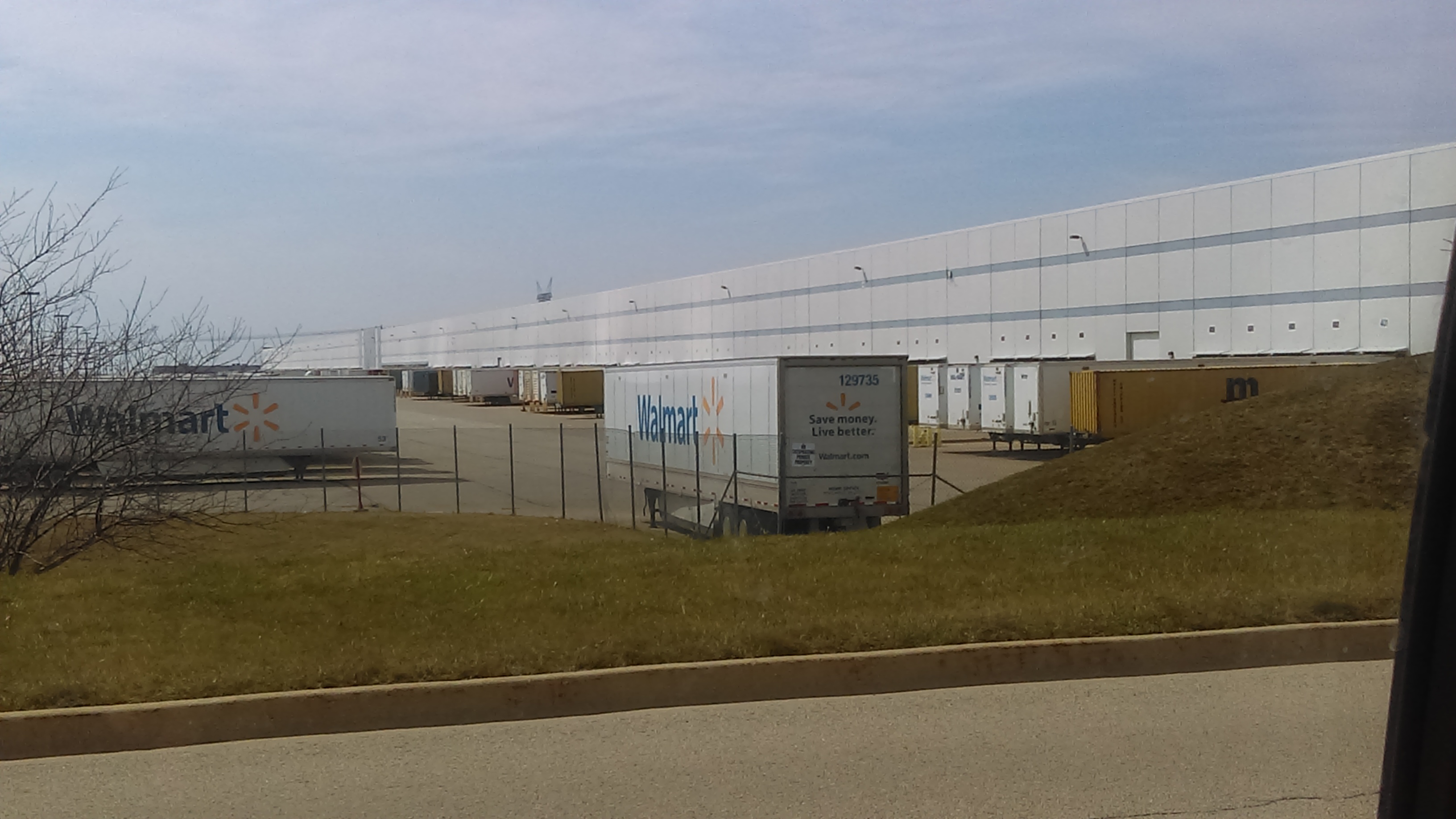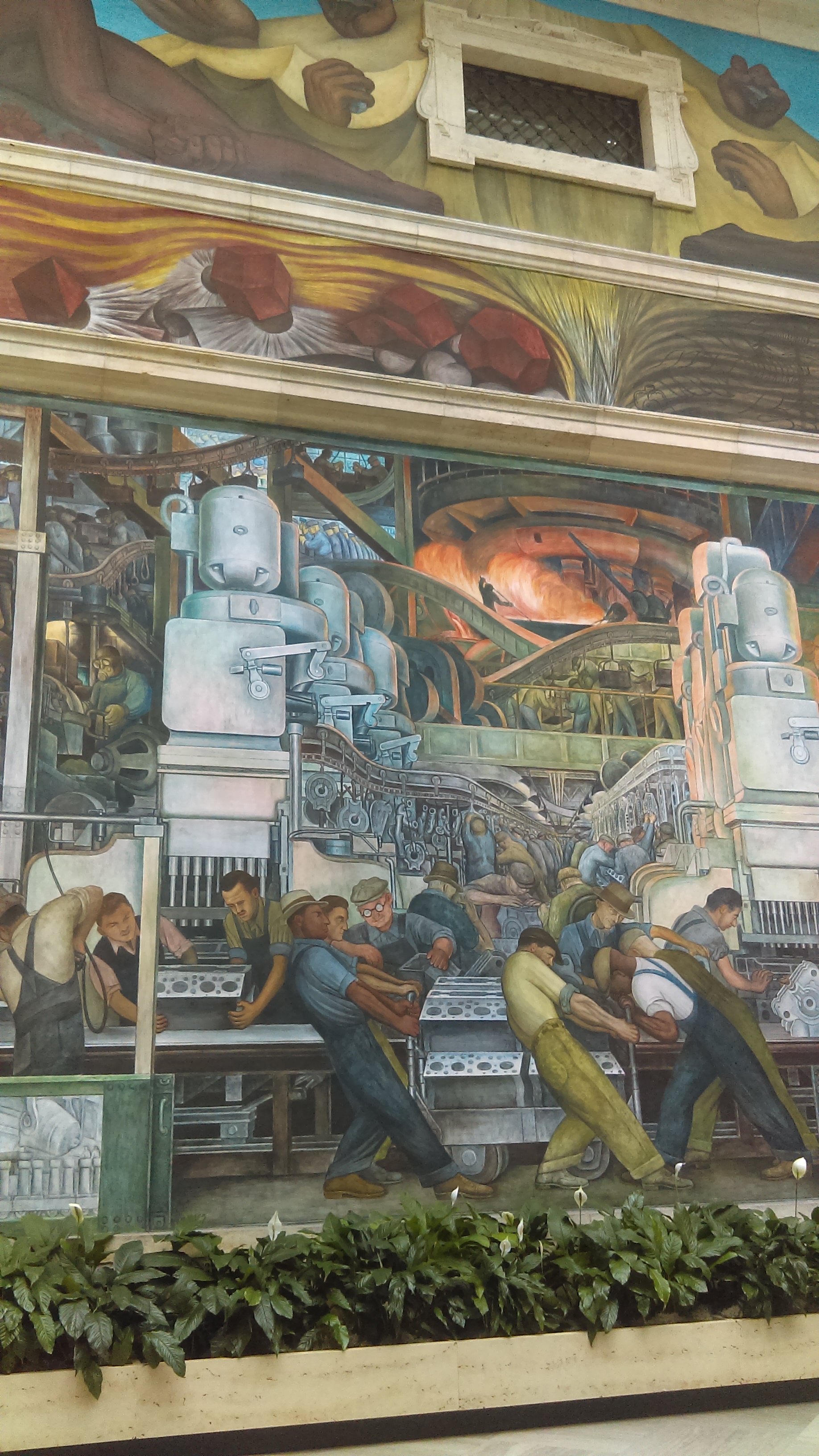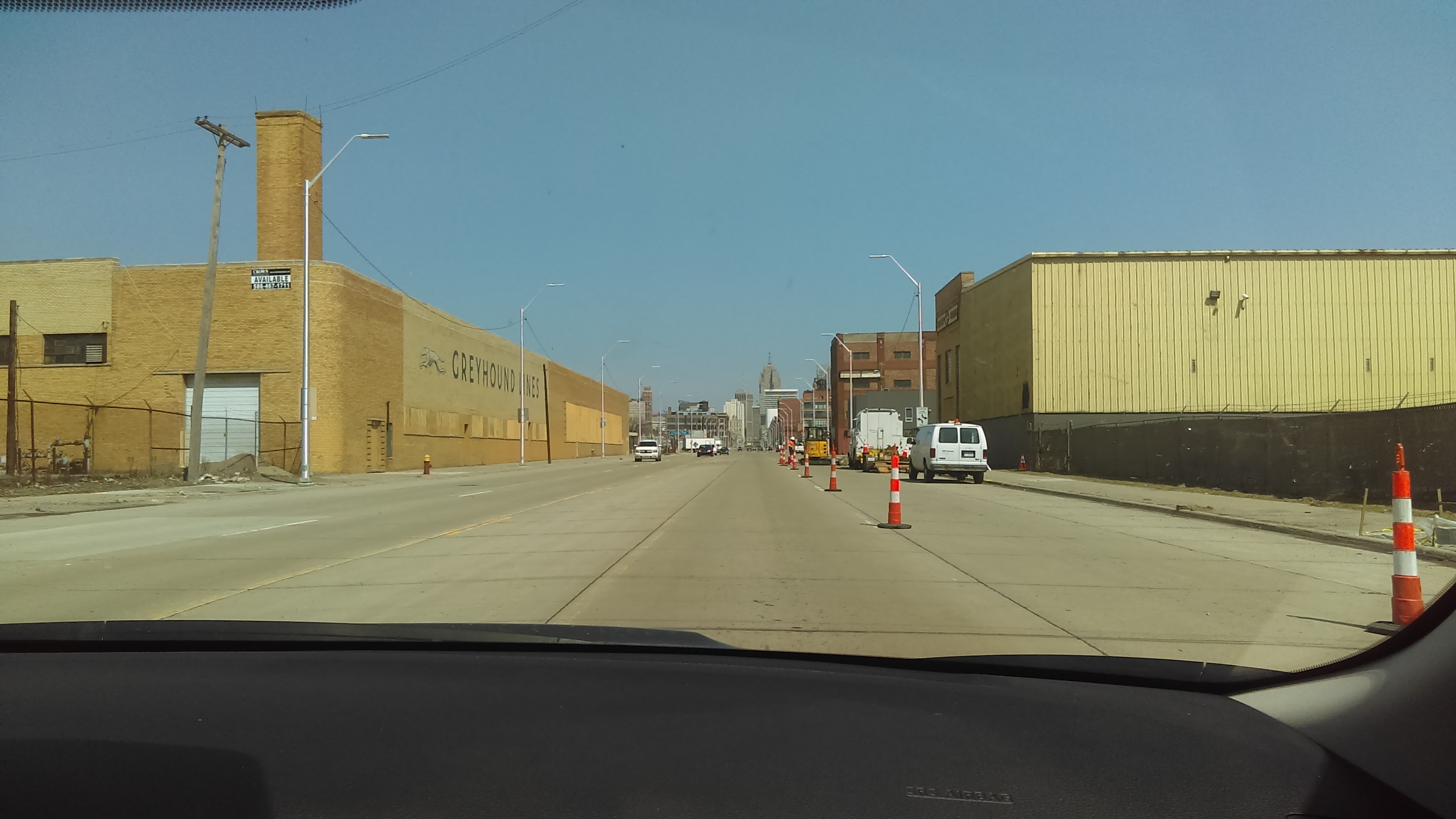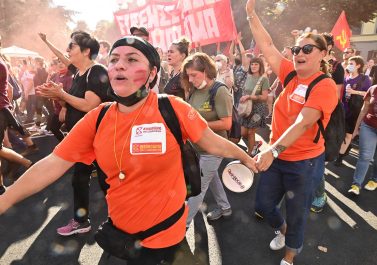In 2017 AngryWorkers organised a series of events about what’s going on politically in the USA. We spoke to comrades involved in grassroots activities to try and get a sense of what’s happening on the ground. What’s actually going on behind a lot of the headlines and rhetorical bluster that is often generated by the Left and the press more largely?
Some reports of these events can be found here:
But we also wanted to visit America and so when the chance arose to go to the labornotes conference in Chicago we decided to combine this with a little tour to meet various people and get a sense of the atmosphere post-Trump. This is a short report of our scattered impressions of this 3-week trip in April 2018.
Firstly, the labornotes conference itself. It was huge! Around 3000 people were said to have attended the event, which brings together rank-and-file unionists and labor activists, over the 3 days, with 200 parallel workshops running. It was the largest one ever, which itself is an indicator of the shift in people’s activities and engagement. This can probably be accounted for by the post-Trump effect that has created a sense of urgency to act, as well as concrete changes to labor laws (e.g. the Janus ruling that effectively bars unions from collecting fees from non-union members), as well as broader developments that has seen pay plummet, services further eroded and more direct action being taken on the streets with movements such as Black Lives Matter, Fight for $15 and the Women’s March, as well as massive, well-coordinated and successful strikes such as West Virginia teachers’ and Verizon.
This mood of optimism prevailed at the conference, which made it feel a lot more hopeful than events in the UK. Fresh from the wildcat victories of teachers, the slogan of the conference was, “There is no such thing as an illegal strike, only an unsuccessful one!” And the keynote speech from one of the main organisers in West Virginia was, for me, the highlight of the conference. Amy Mizialko is a mother of 4, who was holding down 2 jobs to make ends meet as the salary of a music teacher was nowhere near enough to live on. She spoke about how, after the most recent cuts to pay and benefits that saw medical professionals quizzing teachers about their sex lives and having to wear fitbits for their health insurance plans, she opened up her pay packet and started to cry. The desperation of the situation spurred her to action and a facebook group was set up that became the bridge to collectivise the anger that had been brewing for a long time. Her unassuming persona made their achievements all the greater. The concrete example of members taking back power within and against union structures amongst an audience of weathered unionists showed how peoples eyes were wide open about the contradictions of unions as an organisational tool. Her speech can be seen here: https://www.youtube.com/watch?v=xLIXB_hxBYE
Another great workshop was about the ‘Santuary on the Streets’ project being run by a workers’ centre in Massachusetts. This group were talking about how they had built an organisation that tackled workplace abuses as well as building a grassroots network to stop ICE immigration raids and deportations. https://pvworkerscenter.org/sanctuary-in-the-streets/
We were also invited to speak at the Railroad workers’ convention that happens at the same time as the labornotes conference. We shared beers and peanuts with some great folks, an impressive network of militant rank-and-filers who can provide strategic knowledge in mapping a wider logistics structure in the US.
In the only way that Americans can be, the mood and speeches were definitely of a ‘can-do’ variety. As an outsider, I was struck by how articulate everyone’s impromptu speeches and contributions were.
The majority of the workshops were focused on the USA but Angryworkers were on a panel with comrades from Poland who organise at Amazon through their grassroots union, Workers’ Initiative, and SI Cobas who organise warehouse workers in Italy. Around 100 people turned up to hear about our respective experiences and approaches to organisation. It became clear over the trip that people had a particular thirst for getting involved in organising at Amazon. We were really surprised at how few groups had attempted to infiltrate this behemoth of an organisation, especially considering the amount of academic literature that has been produced about the importance of Amazon as a sign of changing labor relationships and systems of production. We met a few people along the way who were about to embark on a ‘salting’ expedition into the Amazon warehouses and they could also link up with each other at the conference. We look forward to hearing about their first-hand experiences.
A major point we tried to push at the conference and throughout our trip was the importance of people documenting their experiences, good and bad, so that this knowledge can be debated and analysed with comrades further afield. While there is a glut of academic guff, which is often at a remove from the experiences of workers on the shopfloor, we are seriously lacking reports that detail the efforts that people have made to organise themselves and their co-workers. Not only is this essential to counter the mainstream narratives of ‘workers as robots/slaves’ or, at the other end of the spectrum, workers engaged only in victorious struggles, it also gives us some sense that we are building on each others experiences and not always having to start alone, and from scratch. A new website, ‘Organizing Work’, has been set up where people can post such reports and we really hope people do this! http://organizing.work/about/

We met one guy in particular that had a wealth of experience as an official union ‘salter’ who had never written his stories down. He is a member of the IWW but had been employed by the big unions in the McDonalds Fight for $15 campaign as well as the Walmart strike in Elwood on the outskirts of Chicago in 2012. There is a great video about this latter strike here: https://en.labournet.tv/video/6405/walmart-warehouses-strike-2012
However, there is an important story behind the film, which deserves to be told. This IWW comrade said that the Walmart strike was actually a strategic and pre-planned salting effort, which the film does not go into. There is nothing wrong with this per se, but if we only see the strike as developing as a more-or-less spontaneous workers’ self-organisation, we are not being honest about what was possible in that situation and the driving forces that affected the way in which the struggle was conducted and how it ended up.
Our IWW comrade told us that he was part of a second batch of salters who had gone to work at the Walmart warehouse with an express desire to organise workers there. In a stupendously large warehouse of 2500-3000 workers in the middle of a logistics hub in the middle of nowhere, the eventual ‘strikes’ engaged around 25 workers, out of which 4-5 were salts, who in turn, were all temp workers. In the first wave if struggles, some workers were fired, including the amazing Ulyonda Dickerson in the film. She went on to become a union organiser, although our comrade was unsure of her activities and whereabouts now. These fired workers were eventually compensated £6000 for illegal firing for striking against unfair labor practices. They were not re-hired as the temp agency contract, predictably, was terminated by Walmart.
The amazing thing about the Walmart strike was that the organisers (one of which was Fight For Change) managed to get 600 supporters at the warehouse gates. As I said, this logistics hub is on the outskirts of Chicago, in a place called Joliet. None of the comrades we stayed with in Chicago for the conference had even been there. It was around a 45 minute drive from the city. We went there on a warehouse-spotting expedition to get a sense of the scale of the place. Going there made it all the more impressive that such a struggle had taken place there that shut the warehouse down, ordinarily out of the eye and ear-shot of most of the city’s activists. The film gives the impression that it was this group of workers and supporters who managed to temporarily close down the Walmart warehouse, but our IWW comrade told us that the road was actually closed down by the riot police because news of an impending strike had gotten out. This is not to downplay the actions of the workers, organisers and supporters, only that there is no reason, amongst ourselves at least, to know really what happened and to build on our existing strengths and weaknesses.

In the aftermath, the 2 organisations working behind the scenes split because of internal disputes and nothing was left organisationally inside the warehouse when the funding was pulled. Health and safety conditions did apparently improve though.
Our IWW comrade was later hired as a salt by the SEIU for their McDonalds Fight for $15 campaign. His employment as a salt only lasted 1 month as the unions decided to withdraw all their salts, although it was unclear to me why this was. It was already quite a way into the nationwide campaign anyway. Within that month, our comrade successfully got 5 or 6 workers to go on strike for a day. When the union stopped paying him, he decided to continue solely on the McDonalds wage which ended up making him homeless. On his own this time, without the union behind him, he took out the workers on strike twice more. No gains were made, apart from the fact that workers did not lose their jobs as a result and were let back into work the next day. In itself, that is something. The SEIU ended up withdrawing a lot of the campaign money because their approach was not working. Maybe this was because they were putting more resources into a public facing campaign rather than investing longer-term in salts and workers’ organising on the shopfloor level?
There seems to be more of a salting tradition in the States, and it is not looked at with the same disdain as in the UK. It would be great if we had more insight into this process, whether this is through the big unions or not. This approach by the big unions is apparently a copycat strategy from smaller unions e.g. the Starbucks campaign, which had quite a bit of success. We saw Unite in the UK adopting this strategy a couple of years ago with the Unite Hotel workers branch. There are obviously benefits to having an insider perspective, even if only for a shorter period of time, but in terms of building a longer lasting capacity, what would be required? We hope our IWW comrade finds time to put all of his experiences to paper, even from his individual point of view.

From Chicago, we travelled to Detroit. There was no way we could avoid being ‘poverty tourists’ – we were there for only a short period, we obviously wanted to see the city (the only way being by car), so we ended up being driven around street after street of boarded up housing. It is how you would imagine, only it is disconcerting how easily one becomes used to such a landscape. It was also interesting that many of the boarded up houses are not just shacks, but include houses that would be mansions by UK standards. House prices are rising and the centre of Detroit has been totally regenerated (complete with totally useless cable train that goes round and round in circles) but the city still seems a very long way off recovery. The decimation was shocking, even if you are somehow prepared for it.
This wasteland also gives opportunities for people to live together in bigger groups, to take over and buy massive empty houses that they can slowly do up and live in affordably. This is what our hosts had done – they had bought their now beautiful mansion for $20,000 and 10 years later it was now worth $80,000. They had chickens in the garden and space for at least 10 people. But building the IWW in a city where so many people are unemployed is undoubtedly problematic.
Our great hosts drove us around the Ford Rouge plant, we visited the IWW archives, we looked at all the old copies of the former student newspaper taken over by the League of Revolutionary Black workers, we saw the Rivera mural and sampled some excellent Mexican food. Safety is a big issue though; we could not walk around much – when we wanted to walk the 10 minutes back to the house from a bar, a discussion had to be had about whether it was safe.

From there we got the overnight Greyhound bus to New York. These buses were actually worse than the megabus. We met various comrades, many of which had joined the DSA. The Democratic Socialists of America had a massive upswing in membership after Trump was elected. It attracted a lot of new people into the scene and consequently, a lot of politicos who had been around the block a few times also joined as it was a fresh and ripe recruiting ground! There seems to be little in the way of centralist approaches – people attend meetings with their own interests and can link up with others who are interested in similar issues. We met a guy in DSA who was about to start working at Amazon with an eye to organise, although it was not a ‘DSA thing’, rather there were people who were interested in Amazon who had formed a small group within DSA. It seems to function more like a network and in New York alone has 3000 members. It would seem sectarian in this context perhaps to snub it if you were on the libertarian and communist left.
We met with the IWW in New York to hear about their Stardust campaign and hopefully a full write up will feature on the ‘Organizing Work’ blog. We also spent some time with the comrades from Unity and Struggle who are heavily involved in the local group, ‘Take back the Bronx’, taking up issues like gentrification and park redevelopment that are significant locally. They were dealing with questions arising from trying to build a national organisation at the same time as building up a local branch. How much time do we dedicate to recruitment with the aim of building our capacities versus the time we spend on our local organising? And how do we encourage a broader strategic debate amongst our milieu? Angryworkers are also grappling with these questions and have written a longer response about our thoughts on these questions here: https://angryworkersworld.wordpress.com/2018/08/27/thoughts-on-organisation-take-3/
We took short trips to Providence and Hartford to meet IWW comrades there. An Amazon fulfillment centre had opened on the outskirts of Hartford in 2015 in the town of Windsor, and there’s also a sorting facility about 30 miles south, in the town of Wallingford. There’s also another warehouse breaking ground soon in North Haven, which is the next town south of Wallingford. Hartford is a place where there’s both a low amount of worker organising happening currently, and a heavy concentration of Amazon workers living in the city limits. Providence was smaller but a group of dedicated comrades were gathering a lot of experiences and knowledge about their local area and concentrations of mainly service workers. We look forward to reading some reports from them in the near future.
Thanks to everyone who hosted us, came to our presentations and discussion events, who drove us around, told us about what they’re doing and offered us hospitality and comradeship. Feel free to come to our neck of the woods in west London for a warehouse tour and some ale or tea if you’re ever in the UK!
Some AngryWorkers



